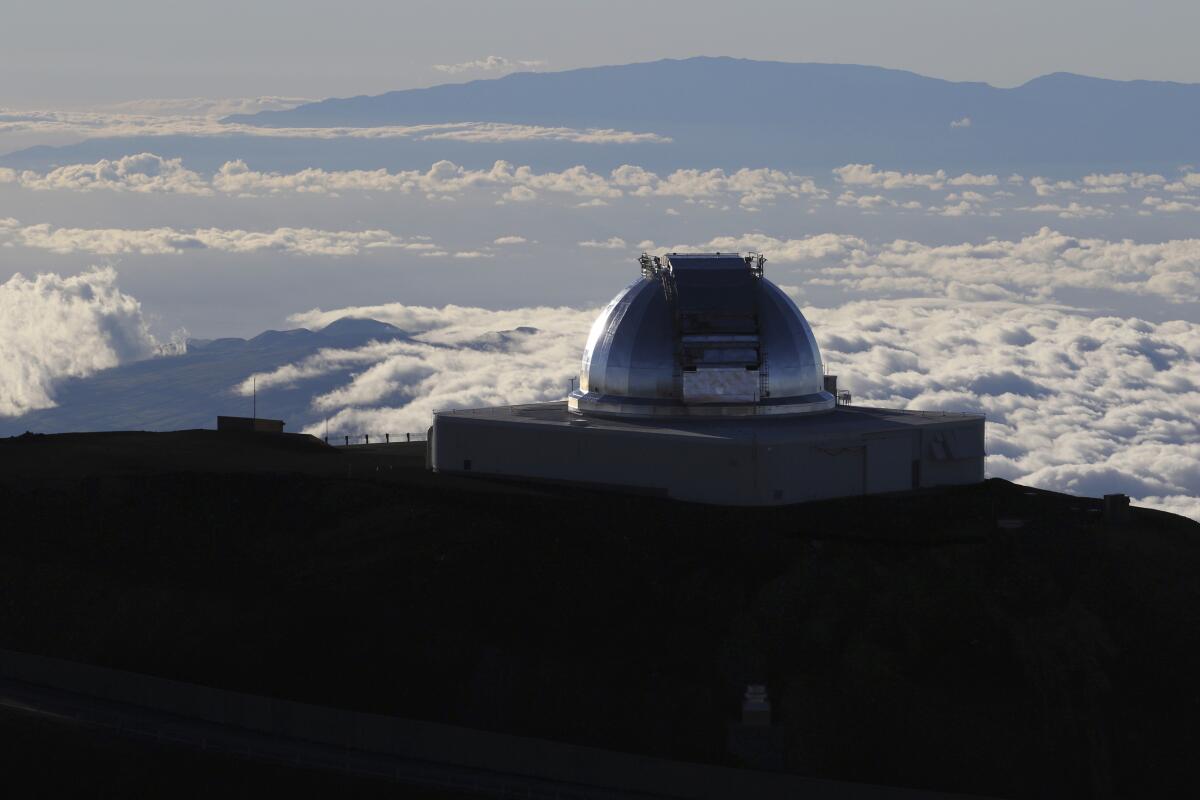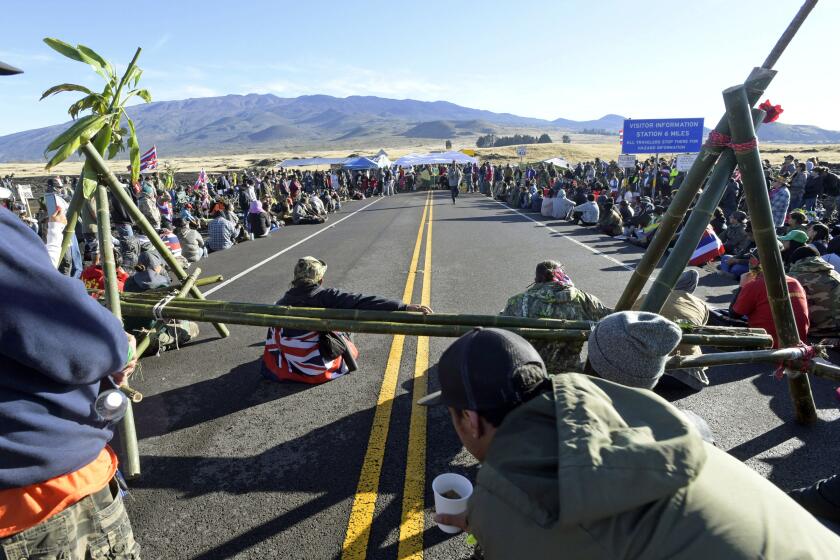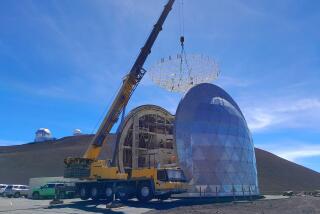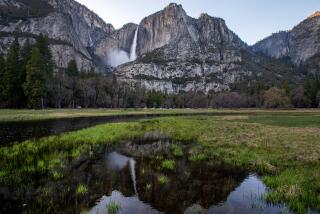Attempt to take a second photo of a black hole is canceled due to the coronavirus

- Share via
HONOLULU — Observatories on Hawaii’s tallest mountain have shut down operations in response to the governor’s stay-at-home order aimed at preventing the spread of the coronavirus.
The shutdown of telescope operations on Mauna Kea is expected to affect more than 500 astronomers, instrument scientists, engineers, technicians and support staff who work at the Big Island summit and at observatory bases below, the Honolulu Star-Advertiser reported this week.
Democratic Gov. David Ige signed a March 23 proclamation ordering state residents to remain at their homes from March 25 through April 30. Only essential workers were exempted.
Most of the work at the Mauna Kea observatories is federally funded, so few, if any, employees are likely to be laid off or furloughed, said Doug Simons, director of Canada-France-Hawaii Telescope.
This is the second time operations on Mauna Kea have shut down in a year. The mountain’s access road was blocked for more than five months last summer and fall as demonstrators protested against the Thirty Meter Telescope, a $2.4-billion project that involves land held sacred by some indigenous Hawaiians.
Last year’s shutdown interrupted hundreds of programs run by scientists from around the world and affected about 100 scientific publications that would have used data from Mauna Kea.
Every morning, hundreds of Native Hawaiians emerge from tents and pickup trucks to protest a new telescope on Mauna Kea, which they hold sacred.
Simons expects the same could happen for every month that the Mauna Kea observatories do not operate.
”It’s a big blow,” he said, adding that some scientific discoveries are likely to be lost. “We don’t know things we miss because we weren’t looking.”
The cancellation includes the second run of the Event Horizon Telescope, the global array that includes the James Clerk Maxwell Telescope on Mauna Kea.
In the swirling heart of a distant galaxy, 55 million light-years from Earth, lies a supermassive black hole with a mass 6.5 billion times greater than that of our sun.
The array, which last year provided the first image of a black hole, was supposed to begin observations at the end of March to build on the first set of results.
A combination of weather patterns and celestial mechanics make the observations possible only from late March to early April.







